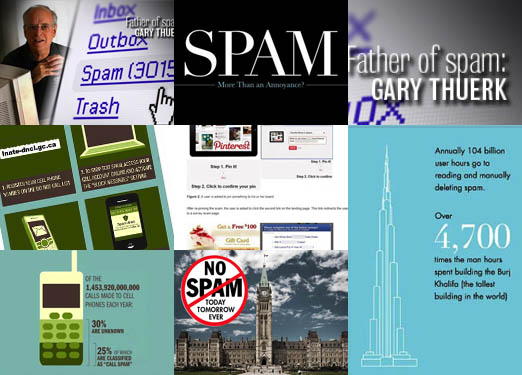Of all the annoyances that come with modern information technology, e-mail spam is perhaps one of the worst. Unsolicited messages have clogged inboxes ever since e-mail became a popular method of communication, and the ramifications go far beyond the time wasted when you delete them.
About 9 out of 10 e-mails is considered spam, according to security vendor Symantec Corp. That’s 260 billion spam emails sent every single day. The lion’s share of that spam is sent by botnets, networks of computers that have usually been infected by a trojan virus and are used to send out e-mail messages involuntarily. Spam is used to infect computers with malware, in phishing attempts to steal personal information and money, and to peddle pharmaceutical drugs of questionable quality. Spam is even bad for the environment – McAfee commissioned a study that reported the amount of energy consuemd in transmitting and deleting spam is equivalent to electricity used in 2.4 million U.S. homes, and generates the same greenhouse gases as 3.1 million passenger cars on the road.
It’s no wonder that the Canadian government wants to fight back against spam. Canada’s Anti-Spam Leglislation passed parliament and received Royal Assent in December 2010. Final regulations for the law were issued March 28, and the enforcement bodies have been identified. The law is set to be put into force in the coming weeks, and Canadian businesses need to adapt their e-mail practices or face stiff penalties. Here is everything you need to know about the new anti-spam law.
What you need to know
Canada’s anti-spam regulations finally unveiled
CRTC issues the regulations that must be followed by businesses sending out any electronic messages. The new rules have been a long time coming.
Staying out of ‘The Freezer’ with your e-mail campaigns
A group of governmental bodies will soon start enforcing the anti-spam law passed by Parliament in 2010. Here’s what you need to do to get ready.
The Freezer isn’t so hot for stopping spam, critics charge
Canada’s Bill C-28 is just what the country needs to keep spam-crazy companies in line but a $700,000 spam reporting centre may be nothing more than “window dressing” according to experts. Government bodies charged with enforcing the law are also still working out details of how to coordinate activities.
Canadian businesses face tough challenges with strict anti-spam law
Canada’s new anti-spam law will be among the world’s toughest when it comes into force some time this fall. Lawyers and marketing specialists say Canadian businesses need to understand the law and make some changes in the way they use e-mail to avoid possible fines.
Spammers face $10 million fine under Canada’s new law
Canada now has its own anti-spam law after Bill C-28 was given Royal Assent Dec. 15. Enforced by the CRTC and the Competition Bureau, violators of the law could see fines as high as $1 million for an individual or $10 million for an organization.
Go to top of page
Anti-Spam: Our take
Do Not Call List should be put on ice
Why not put the Do Not Call List in The Freezer? Merging the two centres could create a one-stop-shop for Canadians to manage their communications preferences. They could report the unsolicited communications they receive, and inform consenting companies ahead of time that they don’t want to be contacted.
More opinion pieces on spam
Understanding how botnets work, looking at spammer strategies, and the lack of enforcement against cybercriminals.
Go to top of page
Anti-spam videos
Anti-Spam: Resources
Canada’s Anti-Spam Legislation
Official Web site for Canada’s new anti-spam legislation, which attained Royal Assent in December 2010.
Industry Canada’s CASL guide
A question and answer guide to Canada’s new anti-spam legislation as provided by Industry Canada.
Blakes’ Anti-Spam resources
Canadian law firm with a business focus offers advice on adapting to Canada’s new anti-spam legislation and information on live education sessions.
Go to top of page
Anti-Spam Slideshow

CASL covers substantially more ground than previous anti-spam legislation in Canada.
Go to top of page




